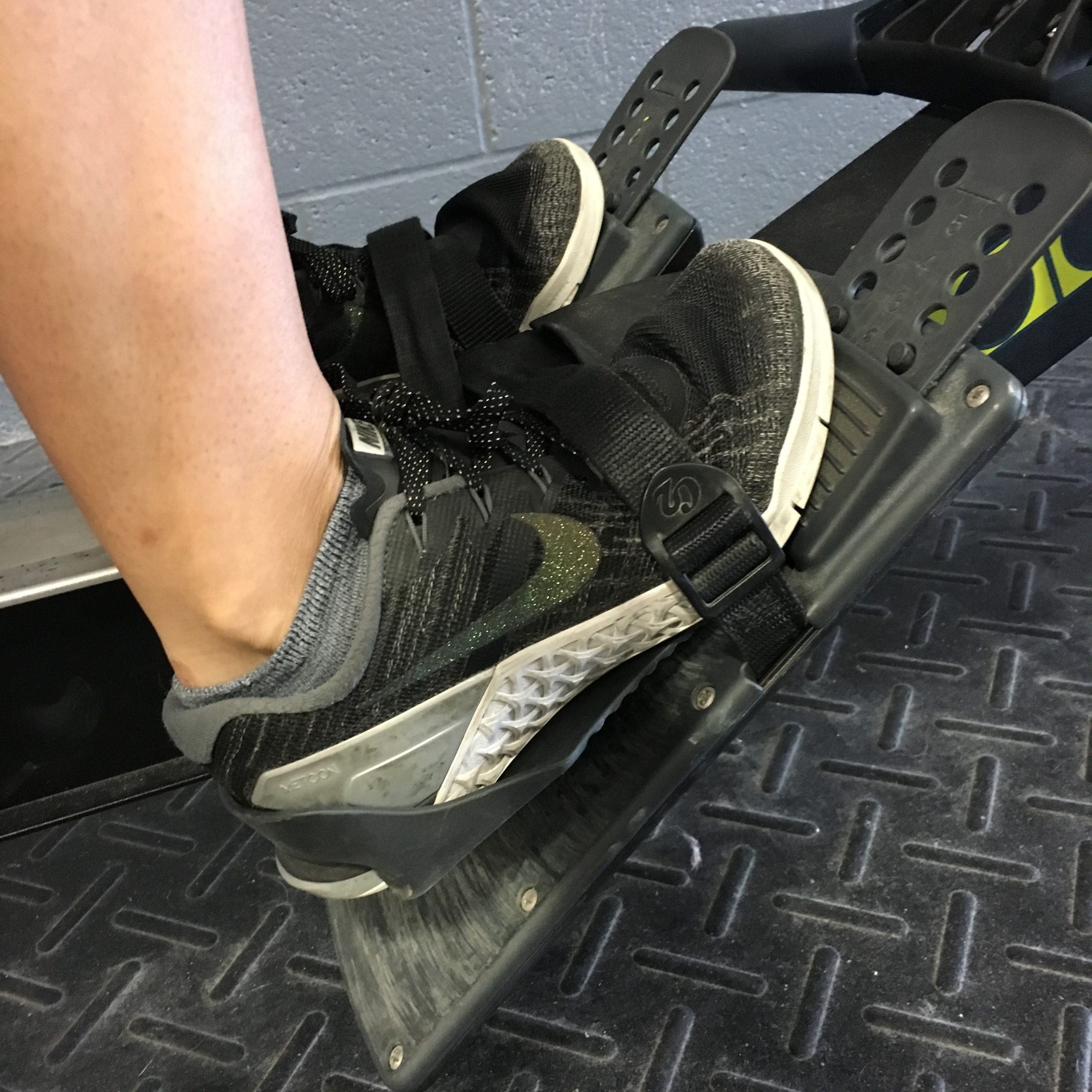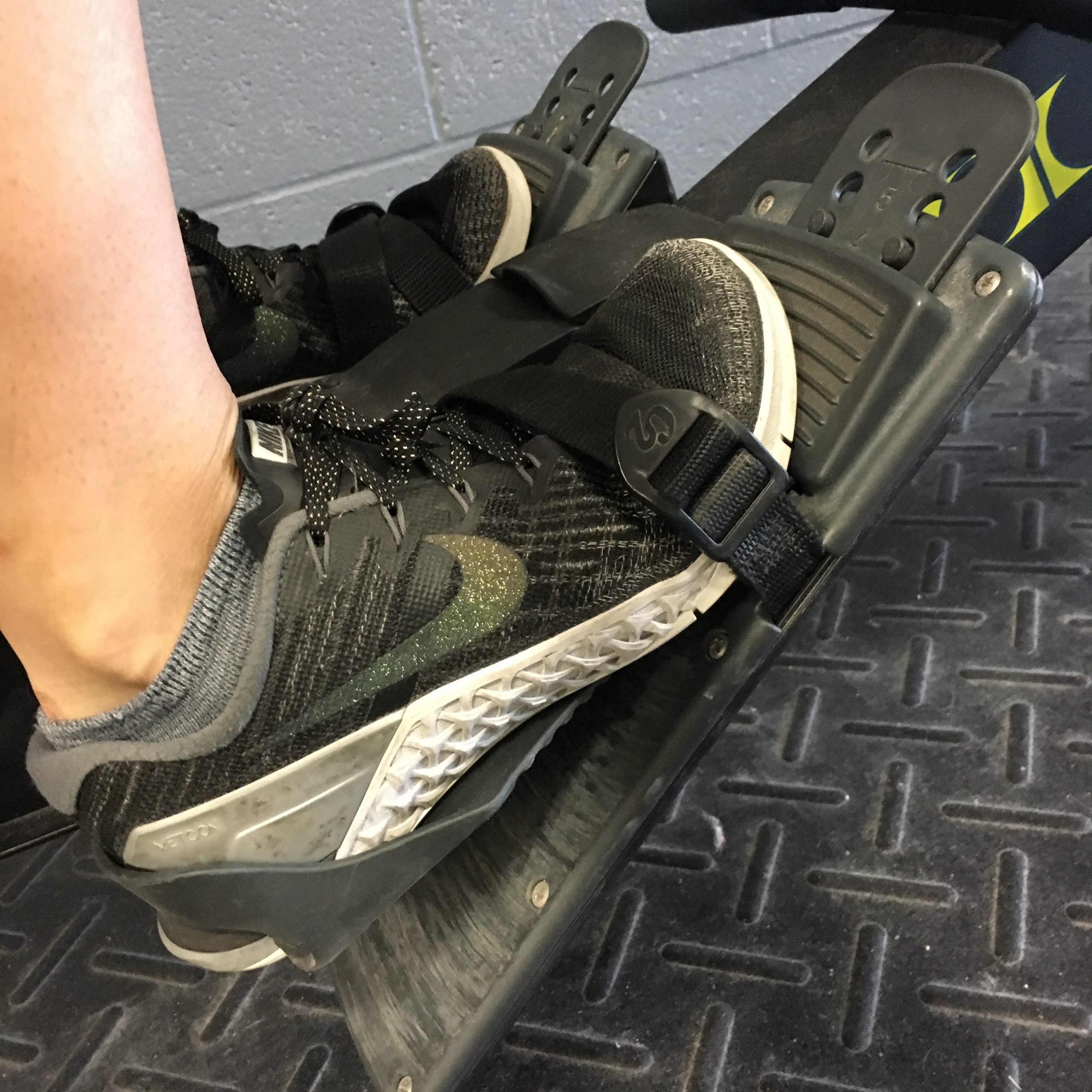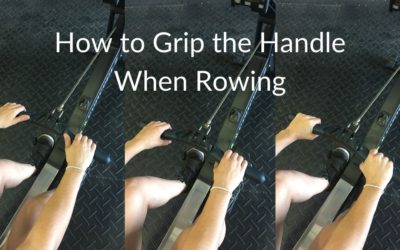Foot Strap Placement
The placement of the foot straps on your shoes can be just as important as anything else in your rowing stroke. In fact, having proper foot placement could fix any technical issues you may not be aware of.
When you change where your foot sits, it affects the angle of your knees, and thus the angle of your hips and the amount you can lean forward. It can also affect how you drive your feet into the footboards. If the straps are too high, you might start driving through your toes instead of your heels.
A lot of people I see put the straps too low on their foot, or in the same way have the footboards too high. Below is a picture of having the strap too low on your shoes:

Most rowing coaches will tell you to place the strap across the widest part of your shoe. I’m a little bit different, and I like to place it across what I call my “shoe crease”. You know the part of your shoe that bends when you pick your heel off the ground? Yeah, right there! Typically, it is right above where the widest part of your shoe is. For some shoes, these two places may be close enough to the same thing that it doesn’t make a difference.
Here is a pictures with the strap placed where I like to have it.

I like to place it there so that my foot doesn’t feel restricted when my heels slightly lift off the footboards at the catch. Why have to fight anything when you’re trying to row?
You adjust the height of the foot straps by moving the base up or down with the tab of holes on top. In order to move the strap up on your shoe, the base needs to move DOWN. This will give you fewer holes remaining on the base.
If your feet are bigger, you will most likely be on the lowest setting, which will leave no holes above your toes.
I do realize in a perfect world I would have enough flexibility that my heels would stay on the footboards during my entire stroke. However, that’s just not how most people roll, including me (but I am working on it!).
How to Grip the Handle When Rowing
Something as little as how you grip the handle can change more than you think about your rowing stroke.

